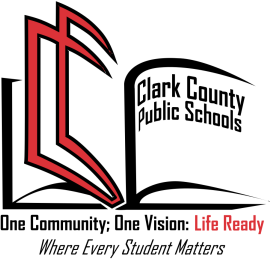CARES Act money will pay for teachers
Published 4:53 pm Thursday, February 25, 2021
|
Getting your Trinity Audio player ready...
|
If it were not for federal CARES Act funding, Clark County Public Schools would have to cut staffing because of a shortfall in the school district’s general fund budget this year.
According to Superintendent Paul Christy, the district was looking at having to cut approximately 12 certified and three classified positions in the school system.
Aleisha Ellis, the schools’ chief financial officer, said the district will use about $1 million of its $7 million CARES Act money to cover the salaries, saving the schools about $820,000.
“That gets us back to a balanced budget,” she said during a discussion with the county school board on Feb. 16.
The district has until December 2023 to use the federal money from the $2.2 trillion Coronavirus Aid, Relief and Economic Security Act, which was passed by Congress and signed by the president at the end of last March.
Ellis said the administration was proposing that none of the positions be eliminated because many students have been struggling with virtual learning, and school leaders felt that all the positions were needed.
“I want everybody to know that everybody is going to be here. This is not the year to be cutting staff,” Christy said.
He also said that a large amount of the allocation, based on the Centers for Disease Control and Prevention guidance, is to be used for improved air quality, but Clark County is “way, way ahead of the game in air quality” and isn’t going to spend anywhere near the amount of the grant on its air systems.
“I feel like the way we’re going, using the CARES Act is the best use of that money,” Christy said.
The superintendent said that in a meeting earlier that day with the state commissioner of education, county officials were told, “that’s what it’s for.”
Prior to March 1, district school boards must approve tentative staffing allocations to schools’ site-based decision-making councils, with final staffing allocations to be made by May 1.
During the Feb. 16 meeting, the board voted 5-0 to approve the administration’s proposal.
Christy said the final allocations will be made to the board at its April meeting.
In deciding how to allocate, schools must follow state guidelines for student-teacher ratios.
Christy said that Clark County is currently 23 positions over the state minimum.
“We’ve always been that way,” he said.
Budget discussed
The superintendent said the district has had to tighten its finances.
The district has reduced a $2.2 million deficit to $820,000 in two months, he said.
“It’s been difficult. There’s been some really hard conversations with staff, with administrators in different departments in the facilities side, transportation … all the other parts,” he said, and the district has cut its operating budget to the point where “it’s going to be hurtful to cut it any more,” he added.
Ellis said the district had cut operations to “bare bones,” and there was nowhere else to look but salaries.
She said a big part of the reason for the deficit was that the budget had included a tax increase and pay increases for staff, but last year the school board decided not to approve the tax increase as a gesture of goodwill to property owners, many of whom faced financial difficulty or uncertainty because of the coronavirus and the economy.
The district has had a deficit for the past two years.
“It all compounds,” Ellis said.
“If you increase your reoccurring expenditures, you also need to increase your reoccurring revenues, and that did not happen two years in a row in our district,” she said.
“What concerns me,” Board Member William Taulbee said, “is that we’re using one-time funding, and it sounds like we’re going to be in the same boat next year.”
He asked how much of the $7 million CARES funding has been allocated, or will be.
“The other expenses … have been very minimal, if anything,” Christy said.
He said the administration spent about $3,000 of it on an ionization system that kills viruses because the district has “three buildings that don’t have fresh air — Phoenix, Preschool and Central Office.”
He said they did the work on Central Office first because it was the least expensive to do, and they are getting prices on the other two buildings, which will be discussed at the next board meeting.
Some of the money, he said, will be used for summer school and “title programs.”
Christy said expenses should go down, and there is a possibility of more revenue in the year ahead.
“It’ll probably take us a couple or three years to get them all pulled back in,” Christy said, meaning having the positions be funded by local revenue rather than CARES Act money.
“As we go through, we’ll tighten up on the staffing as we have natural attrition as people retire,” he said.







